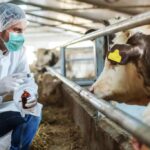
Ensuring safety in commercial roofing projects is not just a regulatory requirement; it’s a moral obligation. The complexities and inherent risks involved in roofing demand a rigorous approach to safety, emphasizing the need for comprehensive compliance and protocols. This emphasis on safety is crucial not only for the protection of workers but also to safeguard the property and its occupants. As we delve into the significance of safety measures, it becomes clear that professional commercial roofing contractors play a vital role in implementing these standards, demonstrating their commitment to excellence and care in every project they undertake.
The foundation of safety in commercial roofing projects lies in strict adherence to regulatory standards. These regulations, established by occupational safety and health administrations, are designed to minimize risks and prevent accidents on construction sites. They cover a wide range of practices, from the correct use of personal protective equipment (PPE) to the implementation of fall protection systems. For contractors, compliance with these regulations is not optional; it is an essential part of their operational procedures. By following these guidelines, contractors ensure that their projects meet the highest safety standards, protecting workers and providing peace of mind to clients.
Training and education form another pillar of safety in commercial roofing. Contractors who prioritize safety invest significantly in training their teams, ensuring that every worker understands the risks involved and knows how to mitigate them. This training covers various aspects, from the proper handling of materials and equipment to emergency response procedures. Furthermore, ongoing education allows workers to stay updated on the latest safety innovations and regulatory changes, ensuring that safety practices evolve in line with new developments in the industry.
The role of commercial roofing contractors in maintaining safety extends beyond compliance and training. It also involves rigorous planning and risk assessment for each project. Before work begins, contractors conduct thorough evaluations to identify potential hazards and devise strategies to mitigate them. This proactive approach to safety planning is critical in anticipating challenges and preventing accidents before they occur. It involves everything from assessing the structural integrity of the building to planning the safe transportation and storage of materials on site.
Technology also plays a significant role in enhancing safety on commercial roofing projects. Innovative tools and equipment, such as drones for aerial inspections or advanced harness systems for fall protection, have transformed safety practices, making it easier to identify and address potential risks. Contractors who embrace these technological solutions can provide safer working conditions, reducing the likelihood of accidents and ensuring more efficient project execution.
Finally, effective communication is essential for maintaining safety throughout the duration of a roofing project. This includes clear communication between the roofing team, project managers, and the client, ensuring that everyone is aware of the safety protocols in place and their roles in supporting these measures. Regular safety meetings and updates also help to reinforce the importance of safety, creating a culture of vigilance and responsibility that permeates every aspect of the project.
In conclusion, safety in commercial roofing projects is a multifaceted issue that requires a committed and comprehensive approach. Professional commercial roofing contractors, through their adherence to regulatory standards, commitment to training and education, meticulous planning, adoption of technology, and effective communication, set the benchmark for safety in the industry. Their dedication not only ensures the protection of workers but also upholds the integrity of the properties they work on, reflecting their professionalism and care. As we move forward, the continued emphasis on safety will remain a cornerstone of the commercial roofing industry, demonstrating that when it comes to roofing, safety always comes first.





